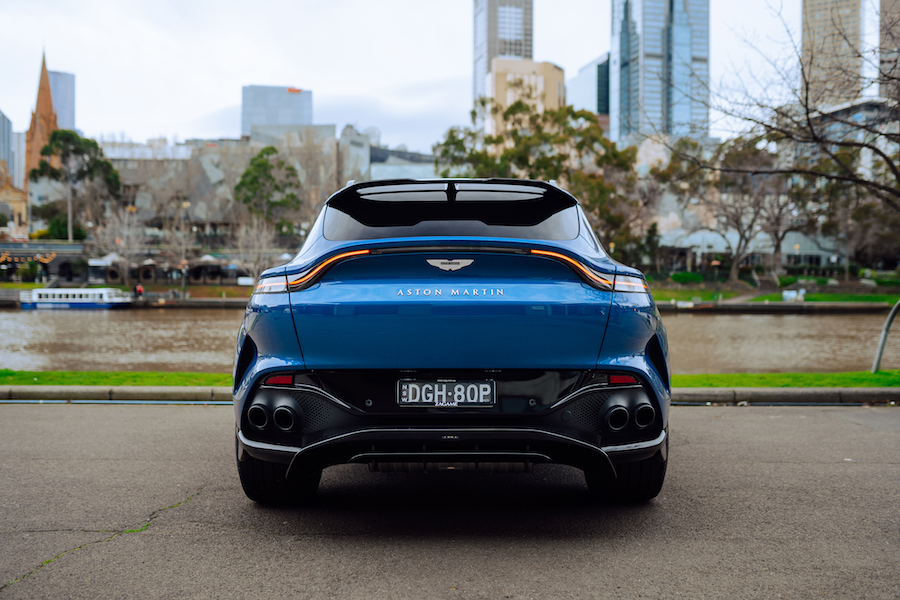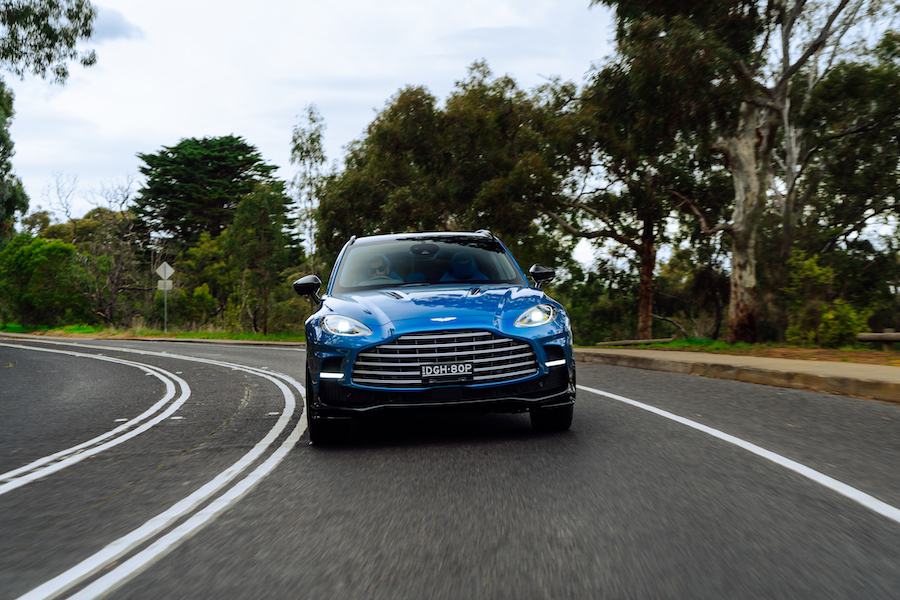SUVs go against everything I enjoy about driving. They are heavy, tall and inefficient, yet for reasons I still struggle to process, they have reliably been the most prevalent segment for the past decade. While family-friendly manufacturers have produced the majority of these tall timbers, sports and luxury brands like Aston Martin resisted the urge to dilute their image, and rightly so. But with staggering sales from the likes of the Porsche Macan and a balance sheet that wasn’t looking too healthy, the British marque had its financial arm twisted and released the DBX in 2020.
Unsurprisingly, the DBX was as gorgeous as it was successful and has led to somewhat of a resurgence for the Aston Martin brand. But while 542 HP was more than enough power for society’s elite, the engineers at Aston were humming in the background, building one of the most ridiculous cars to wear the iconic wings. The new car, titled the “DBX707” (signifying 707PS of power), is the most powerful luxury SUV ever made. So, with a few days up my sleeve, I decided to take the hyper-SUV out and about to see if I could make sense of the pretty colossus.
From the outset, the DBX707 doesn’t look dissimilar to the standard DBX, which isn’t a bad thing by any means. The muscular silhouette is the most handsome SUV I’ve encountered, with near-perfect proportions dancing harmoniously with tastefully sculpted body panels. If you peak a little closer, the 707 sports a more prominent front grille housing improved air intakes and brake cooling ducts, while a new front splitter assists in keeping all of that savage power glued to the tarmac.
The rear of the 707 is probably the only angle that doesn’t look quite right. The LED tail light sweeps upwards across the boot, which I’m sure has aerodynamic benefits, but I think a clean horizontal light strip would look neater and more balanced. New quad exhausts and a plethora of aero-based carbon-fibre round off a very focused visual terrain.

Inside the cabin, Aston Martin has continued their performance theme with aplomb. The new centre console is clad in carbon fibre and provides a surfeit of driver-focused functionality at your fingertips. Courageous enough to turn traction control off? There’s a button at your fingertips. Want to adjust suspension easily on the fly? There’s one for that too. It’s a nice blend of sport and luxury throughout the cockpit, and while some of the switchgear still feels a little dated, at least Apple CarPlay has joined the party.
Once you’re out on an open road, however, little of this matters at all. Put the DBX707 in Sports+ mode, aim for something on the horizon, and the 900Nm of torque will catapult you there with ferocity. The new wet-clutch system and a shorter final drive combine for a snappy joyride through the gears, so much so that the two-tonne of muscle will do 0-100 in 3.3 seconds. Surprisingly though, as impressive as the powertrain is, the chassis development is even more remarkable. While hunkered down in the engaged driving position, the steering and pedal feel was commendable (via 420mm carbon ceramic brakes), with the overall package feeling planted to the point where I forgot what type of vehicle I was occupying. I mean, it’s still a far cry from a Valkyrie, but it never feels as tall or heavy as the specifications sheet suggests.
The prevalent theme of the DBX707 is engineering eminence, which should be commended for that alone. There’s no doubt that the DBX platform has thrown the Aston Martin brand a sales lifeboat, and it appears in saying thanks; the engineering team decided to extract every drop of performance out of the package, shooting rooster tails all the way to shore. And while it hasn’t changed my mentality on the hyper-SUV segment, it is still the best looking and most engaged I’ve felt driving a car of this stature.

Tasting Notes:
- Exceptional chassis
- Ridiculous power
- Tasteful design
Needs Ripening:
- Switchgear doesn’t feel expensive
- Infotainment is far from polished
- $430K for an SUV is a tough pill to swallow
Carpark credentials:
With a large footprint and an even heftier price tag, only the brave would park alongside the general public. Of course, various cameras and sensors assist manoeuvring, but you couldn’t duck down to Bunnings without inducing a panic attack.
The second glance:
I experienced a pursed lip, an up-down, and a decapitating hand swipe from a food delivery rider (I’m still trying to figure that one out).
If this car was a person:
Anthony Joshua in peak fitness shooting a Hugo Boss campaign.




 Aston Martin's new DBX707 proves performance and utility are not mutually exclusive. Photography courtesy Aston Martin.
Aston Martin's new DBX707 proves performance and utility are not mutually exclusive. Photography courtesy Aston Martin.